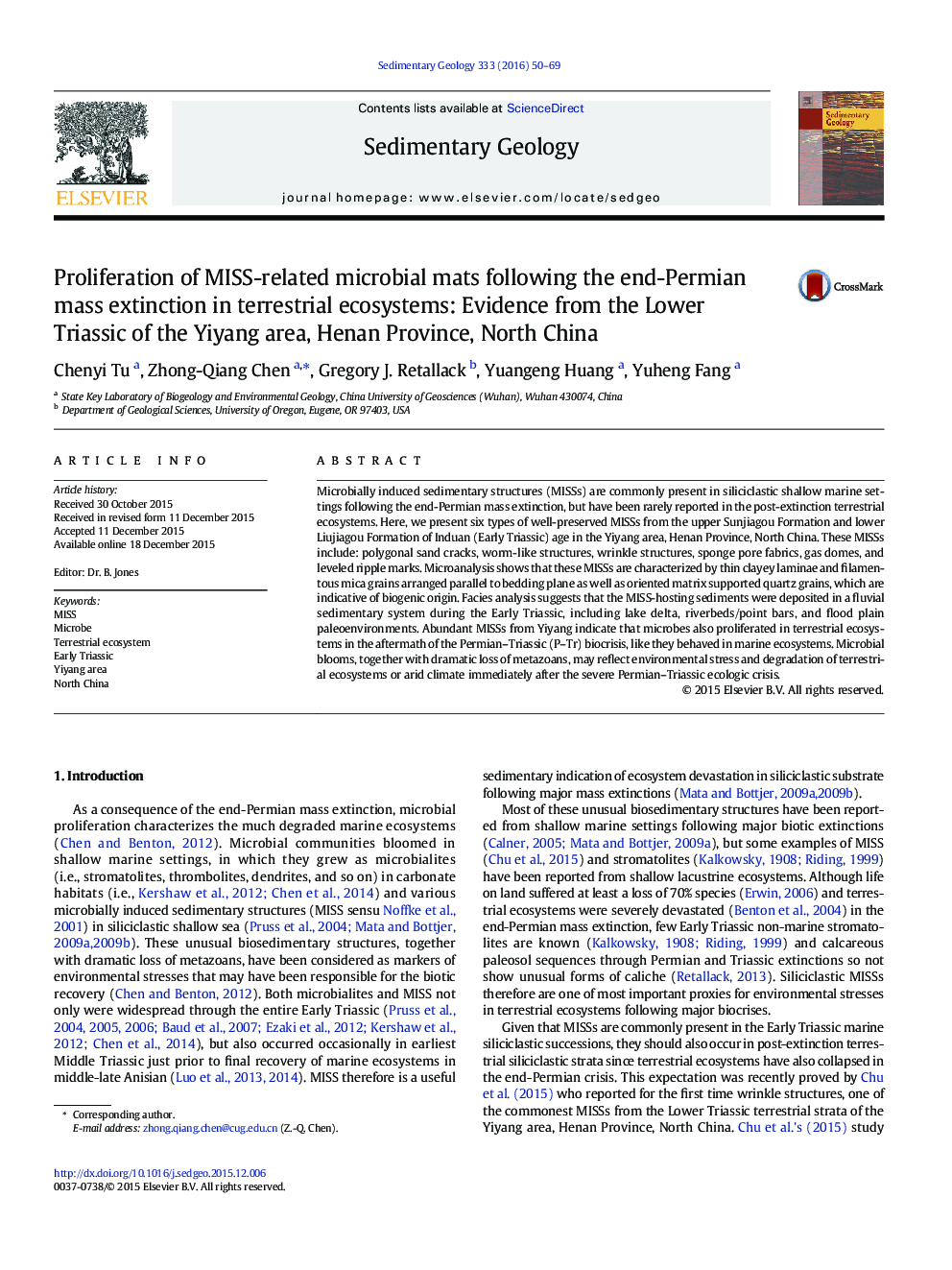| Article ID | Journal | Published Year | Pages | File Type |
|---|---|---|---|---|
| 4689120 | Sedimentary Geology | 2016 | 20 Pages |
•Six types of MISSs are reported from lowest Triassic terrestrial succession•MISSs contain thin clayey laminae and filamentous mica aligned parallel to bedding plane•MISS-related mats were deposited in lake delta, riverbeds/point bars, and flood plain settings•Microbial proliferation indicates environmental stress and degradation of terrestrial ecosystems
Microbially induced sedimentary structures (MISSs) are commonly present in siliciclastic shallow marine settings following the end-Permian mass extinction, but have been rarely reported in the post-extinction terrestrial ecosystems. Here, we present six types of well-preserved MISSs from the upper Sunjiagou Formation and lower Liujiagou Formation of Induan (Early Triassic) age in the Yiyang area, Henan Province, North China. These MISSs include: polygonal sand cracks, worm-like structures, wrinkle structures, sponge pore fabrics, gas domes, and leveled ripple marks. Microanalysis shows that these MISSs are characterized by thin clayey laminae and filamentous mica grains arranged parallel to bedding plane as well as oriented matrix supported quartz grains, which are indicative of biogenic origin. Facies analysis suggests that the MISS-hosting sediments were deposited in a fluvial sedimentary system during the Early Triassic, including lake delta, riverbeds/point bars, and flood plain paleoenvironments. Abundant MISSs from Yiyang indicate that microbes also proliferated in terrestrial ecosystems in the aftermath of the Permian–Triassic (P–Tr) biocrisis, like they behaved in marine ecosystems. Microbial blooms, together with dramatic loss of metazoans, may reflect environmental stress and degradation of terrestrial ecosystems or arid climate immediately after the severe Permian–Triassic ecologic crisis.
